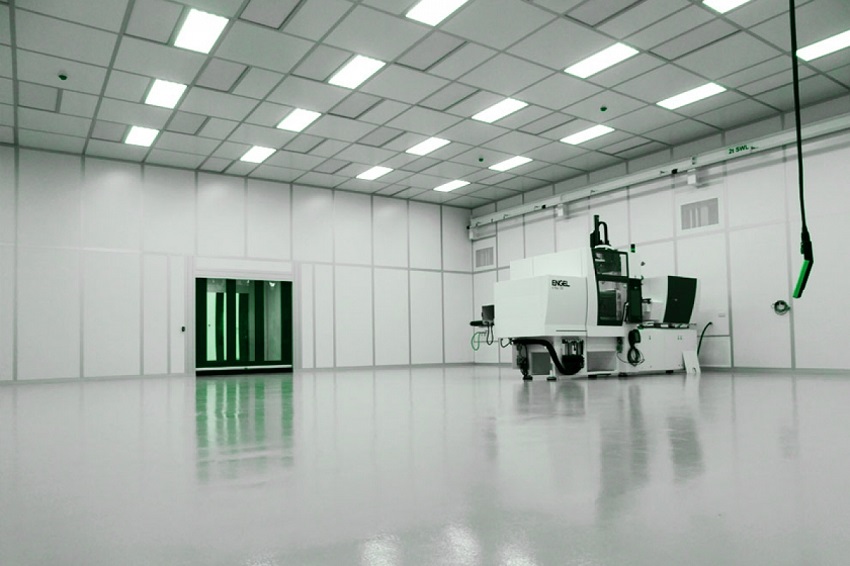
Imagine a space so pristine, so meticulously controlled, that every particle in the air is carefully regulated. Welcome to the world of clean rooms, where precision and quality are of utmost importance. In this article, we will explore the concept of a clean room environment, its significance in various industries, the standards that govern its operation, and the measures taken to maintain its integrity. So, let’s don our protective gear and step into the world of clean room environments! The content has collaborated with https://newark67.com/
Introduction to Clean Rooms: Beyond Ordinary Spaces
A clean room is a specially designed and controlled environment that maintains extremely low levels of airborne particles, such as dust, microorganisms, and other contaminants. It provides a contamination-free zone where sensitive processes can be carried out without compromising the quality and reliability of the end product. You may also be interested in building a cleanroom.
The Importance of Clean Rooms
Clean rooms play a vital role in industries that demand precision, such as semiconductor manufacturing, pharmaceuticals, biotechnology, aerospace, and medical device production. By eliminating or minimizing the presence of contaminants, clean rooms ensure consistent product quality, enhance yield, and reduce the risk of failure or contamination-related issues.
The Structure and Standards of Clean Rooms
Clean Room Classification
Clean rooms are classified based on the permissible levels of airborne particles. The classification systems commonly used are the ISO (International Organization for Standardization) standards and the Federal Standard 209E (FS 209E) in the United States. These standards define the maximum allowable particle count per cubic meter of air for different classes of clean rooms.
Design and Construction Considerations
The design and construction of a clean room are crucial in creating an environment that meets the desired cleanliness standards. Factors such as airflow control, temperature, humidity, and filtration systems are meticulously planned and implemented to ensure optimal conditions.
Maintaining Cleanliness and Integrity
Contamination Control Measures
To maintain the cleanliness of a clean room, various contamination control measures are employed. These include personnel gowning procedures, air shower entry systems, HEPA (High-Efficiency Particulate Air) filters, and strict protocols for handling materials and equipment.
Monitoring and Testing
Continuous monitoring and testing are essential to verify the effectiveness of the clean room environment. Airborne particle counters, surface particle monitors, and microbial monitoring systems are used to assess the cleanliness levels and promptly address any deviations.
Applications of Clean Rooms
Clean rooms find applications in a wide range of industries and processes. Let’s explore some of the key areas where clean room environments are indispensable:
Semiconductor Manufacturing
Clean rooms are a fundamental part of semiconductor fabrication facilities. The production of integrated circuits requires an environment free from dust and other contaminants that can adversely affect the performance of electronic components.
Pharmaceuticals and Biotechnology
In pharmaceutical and biotechnology industries, clean rooms are vital for the production of drugs, vaccines, and other sensitive biological products. Maintaining sterile conditions and preventing cross-contamination are critical to ensure product safety and efficacy.
Medical Device Manufacturing
Clean rooms are crucial for the manufacturing of medical devices, including implants, surgical instruments, and diagnostic equipment. Stringent cleanliness standards are necessary to minimize the risk of infection and ensure the reliability of these devices.
Aerospace and Defense
Clean rooms play a significant role in aerospace and defense industries, particularly in the production of satellites, spacecraft, and sensitive electronic systems. The absence of contaminants is essential to ensure the optimal performance and longevity of these high-tech components.
Conclusion
Clean rooms are remarkable environments where precision and quality reign supreme. By creating a controlled space free from contaminants, clean rooms enable industries to achieve consistent and reliable results. Whether it’s semiconductor manufacturing, pharmaceutical production, or aerospace technology, the importance of clean room environments cannot be overstated.
FAQs (Frequently Asked Questions)
Q1: How are clean rooms different from regular rooms?
Clean rooms differ from regular rooms in terms of the strict control over airborne particles and contaminants. They are designed and operated to meet specific cleanliness standards required for precision industries.
Q2: What are some common contaminants found in clean rooms?
Common contaminants in clean rooms include dust particles, microorganisms, volatile organic compounds (VOCs), and chemical residues.
Q3: How often are clean rooms tested for cleanliness?
Clean rooms undergo regular testing and monitoring to ensure their cleanliness. The frequency of testing depends on factors such as industry standards and the criticality of the processes carried out in the clean room.
Q4: Are clean rooms expensive to build and maintain?
Clean rooms can be costly to build and maintain due to the specialized construction requirements, stringent cleanliness standards, and ongoing monitoring and maintenance procedures.
Q5: Can clean room technology be applied to other environments?
Clean room technology and principles can be adapted to various environments where contamination control is crucial, such as laboratories, research facilities, and certain healthcare settings.

